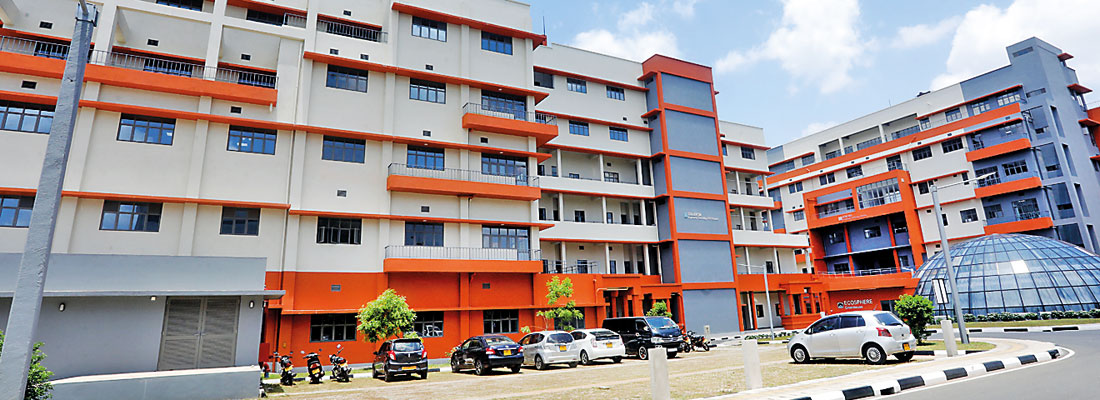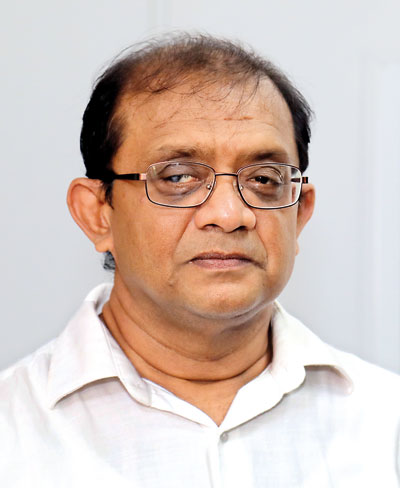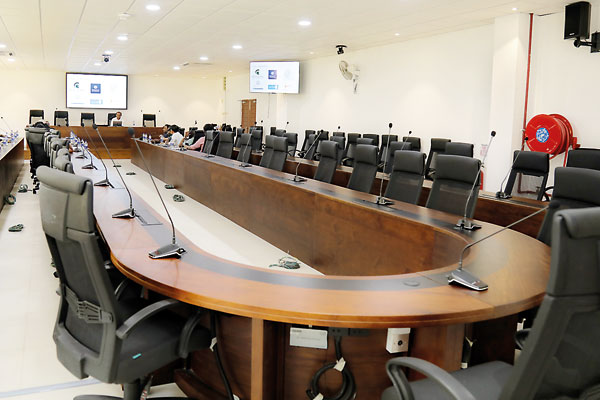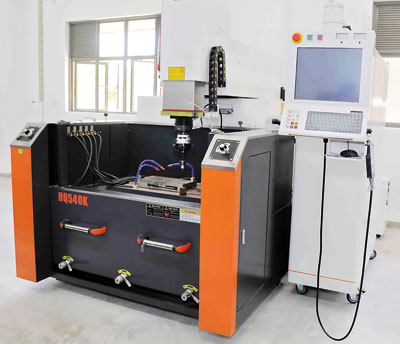News
Rajarata uni builds up capacity to mould tech workforce with ADB support
View(s):
The Faculty of technology at the Rajarata University. Pix by M.A. Pushpa Kumara
By Ishu Bandara
Aiming to strengthen Sri Lanka’s technology based workforce, the Asian Development Bank (ADB) has provided US$145 million in funding to four Sri Lankan universities under the Science and Technology Human Resource Development Project.
The Rajarata University of Sri Lanka (RUSL) received US$36.9m to establish a state-of-the-art faculty of technology complex, which will nurture a new generation of technology-oriented graduates who have the skills and entrepreneurial mindset needed for the modern economy.
Recently, a media team had the opportunity to visit the RUSL, accompanied by ADB officials.

Prof Chathuranga Bamunuarachchi
The project includes modern facilities and advanced equipment to support its goal of producing innovative and capable intellectuals through academic programmes, research, and training. The faculty of technology, one of the six faculties of RUSL, is located in Mihintale.
Speaking to the Sunday Times, Professor Chathuranga Bamunuarachchi, dean of the faculty of technology at RUSL, said that the initial estimated cost to build the faculty of technology was around US$33 million, while the ADB allocated US$36.9m.
However, due to rising costs and other challenges, the total cost surpassed the original estimate.
“This significant investment aims to strengthen Sri Lanka’s technology based workforce by establishing modern infrastructure and improving technical, educational, and research facilities aligned with current industry needs. So, we plan to further increase the number of students making use of these upgraded facilities,” Prof Bamunuarachchi said.
“At present, the faculty enrolls around 350 students up from the 250 admitted annually before the ADB project. The new facility has the capacity to accommodate about 450 students.” he said.
According to him, the ADB- funded faculty of technology has seen growing annual demand for its technology programmes, as the department consistently enrolls more students than the number allocated by the University Grants Commission (UGC).
Professor Bamunuarachchi emphasised that while the faculty’s overall physical capacity is high, there are constraints.
“If all first year students need to be accommodated in a single lecture, the maximum capacity is around 300. We have to have two separate sessions,” he explained.
The Sunday Times has learned that to further improve education and attract future students, the faculty and students frequently organise awareness programmes and seminars for A Level and O Level students in the faculty premises and through outreach visits to schools in areas such as Kandy, Kurunegala, and Polonnaruwa. The programmes aim to raise awareness about technology related degree opportunities at universities across the country and to guide students in selecting suitable A Level subjects.

The meeting room with modern technology
According to the dean, the department continues to receive strong support from the government, which obtained the ADB loan for the project.
In addition, the faculty benefits from various workshops and awareness programmes under the Ministry of Higher Education, as well as assistance in the degree accreditation process.
Improving the value of ADB funding at RUSL, the faculty has evolved into a hub for innovation, gaining recognition for several notable projects.
One such initiative, the Sconia Project, even won the President’s Award, Prof Bamunuarachchi told the Sunday Times.
“The Sconia project involved using sand and converting it into Sconia, a high-value material. The conversion is achieved using different temperature levels. Sconia is a material that can be used in various applications, including high-tech equipment.’’
The former vice chancellor of Rajarata University, Dr Ananda Karunaratne, vice chancellor RUSL, who was previously part of the technology faculty staff, was involved in the Sconia project.

Modern equipment: The electrical discharge machine
The faculty has also had several other innovations, including work on biocomposite material and using bio-material as packing material in food technology projects. They have applied for numerous patents and are awaiting results of many projects in the pipeline.
The ADB funding has played a pivotal role in improving research capabilities and international collaborations at RUSL.
Prof Bamunuarachchige, highlighted immediate benefits for research capacity, noting that the faculty can now undertake complex studies that previously needed international partnerships.
“Initially, we planned to conduct genomic and transcriptomic research in the United States, but thanks to the ADB’s STHRDP project, we now have the capacity to carry out this work in-house,” Prof. Bamunuarachchige said.
The faculty has been designed as a platinum rated green building, featuring high end facilities and an innovation centre, PULSE. Together, these facilities foster a dynamic environment for learning, research, and collaboration with industry partners. Situated on a 2 acre plot, the new faculty building includes an 800 seat auditorium, a three-story library, modern laboratories, multi lecture halls, and meeting rooms.
The faculty operates five academic divisions, bioprocess technology, electrical and electronic technology, food technology, information and communication technology, and materials technology. The ADB funded project has strengthened academic and administrative capacity by providing overseas scholarships to 10 staff members, 11 short-term training courses, and 40 edX online training licenses.
Also, the faculty is involved in international collaborations, including an important partnership with Michigan State University, which began under an ADB funded agricultural education project. It has also implemented a gender action plan to ensure inclusive practices in both innovation activities and industry engagement.
Beyond infrastructure, the faculty emphasises entrepreneurship and product development, enabling students to create marketable products and develop their own enterprises. Several students have applied for five products or patents, with one pending approval, and most graduates are already employed.
A central initiative is the Japanese water hyacinth project, which transforms the highly invasive plant into a pliable particle or MDF board for use in partitions. The project converts an environmental problem into a sustainable income source by cultivating water hyacinth in specific areas, reducing reliance on tree cutting, and managing the plant’s rapid growth and resilience.
The species reproduces both sexually and asexually, grows up to one metre, and its seeds can survive without water for up to 15 years, spreading persistently across the country.
The best way to say that you found the home of your dreams is by finding it on Hitad.lk. We have listings for apartments for sale or rent in Sri Lanka, no matter what locale you're looking for! Whether you live in Colombo, Galle, Kandy, Matara, Jaffna and more - we've got them all!

